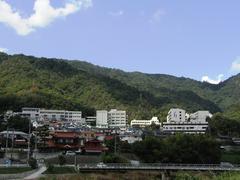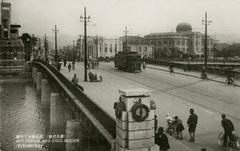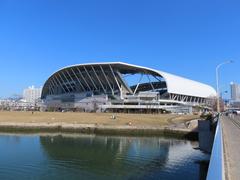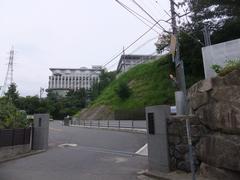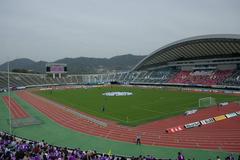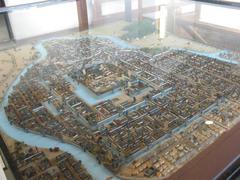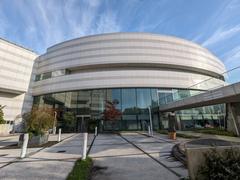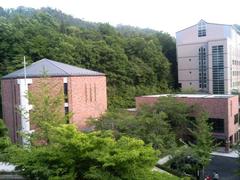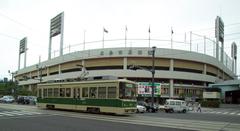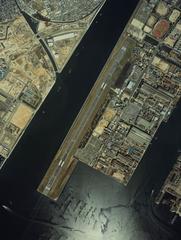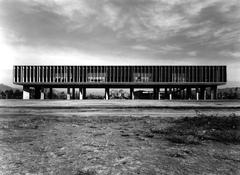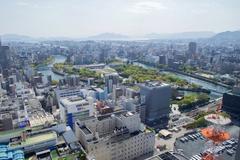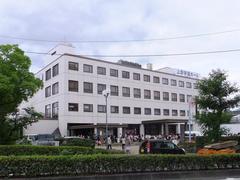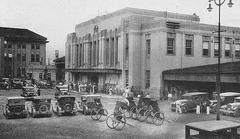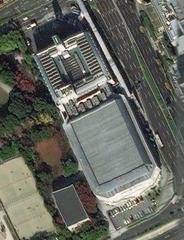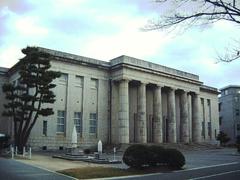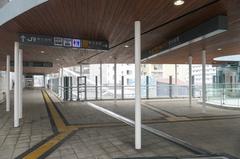
Hiroshima Kokusai Gakuin University Visiting Guide: Hours, Tickets, and Nearby Attractions
Date: 15/06/2025
Introduction: A Gateway to Hiroshima’s Educational and Cultural Heritage
Hiroshima Kokusai Gakuin University (HKGU) stands as a testament to Hiroshima’s resilience, educational innovation, and commitment to peace. Established during Hiroshima’s post-WWII reconstruction, the university’s founding philosophy—“Education is Love”—continues to shape its inclusive, globally minded campus. This guide offers detailed information for visitors, prospective students, and anyone interested in discovering how HKGU connects academic excellence with Hiroshima’s rich historical landscape. Here, you’ll find everything you need, from campus tour details and accessibility features to practical travel tips and highlights of nearby attractions such as the Atomic Bomb Dome and Peace Memorial Park (educativ.net; unipage.net; Japan Guide).
Table of Contents
- Introduction & Overview
- University History and Development
- Academic Programs & Community Engagement
- Campus Facilities and Visiting Information
- Admissions, Student Life, and Internationalization
- Notable Milestones
- Frequently Asked Questions (FAQ)
- Exploring Hiroshima: Peace Memorial Park & Other Attractions
- Practical Travel Tips
- Conclusion & Call to Action
- Sources
University History and Development
Founding Years
HKGU originated as Hiroshima Denki University in the aftermath of the atomic bombing, focusing on technical and engineering education vital for the city’s reconstruction. Founded by Toradora Tsuru, the university’s mission was to provide opportunities to youth facing economic or physical hardship, a vision immortalized in the campus’s 1965 statue inscribed “Education is Love” (educativ.net).
Transition and Growth
On April 1, 1999, the institution became Hiroshima Kokusai Gakuin University, marking its shift towards a broader, interdisciplinary curriculum and enhanced global engagement (NIAD-QE). The university’s approach—“Integral Education involving Study with the Whole Body”—emphasizes intellectual, emotional, and social development, preparing students for diverse societal roles.
Academic Programs & Community Engagement
HKGU offers a wide range of programs in both the arts and sciences, tailored to foster professional skills and intellectual curiosity. The curriculum is student-centered, supporting the acquisition of professional licenses and encouraging graduates to contribute to regional revitalization (educativ.net). The university’s strong community ties mean many alumni work in local businesses, government, and education, upholding the founder’s legacy of societal contribution.
Campus Facilities and Visiting Information
Campus Overview
Located in Aki-ku, Hiroshima, HKGU features:
- Modern Lecture Halls and Classrooms: Equipped with advanced audio-visual technology.
- Specialized Laboratories: Especially in engineering and IT.
- Library: Extensive collections for academic support and leisure reading (unipage.net).
- Student Commons & Cafeteria: Serving Japanese and international cuisine.
- Sports Facilities: Gymnasiums and outdoor fields.
Visiting Hours & Tours
- Hours: Monday to Friday, 9:00 AM to 5:00 PM.
- Entry: Free of charge. Some facilities may require advance booking or permission.
- Tours: Available during open campus days and special events, with English tours by prior arrangement. Schedule tours through the HKGU official website.
- Accessibility: The campus is equipped with ramps, elevators, and clear bilingual signage for international visitors.
Getting There
- By Train: From Hiroshima Station, take local JR lines or buses to Aki-ku.
- By Air: From Hiroshima Airport, a limousine bus to Hiroshima Station, then local transport to campus.
- By Car: On-campus parking available; check ahead for spaces (HKGU Official Site).
Admissions, Student Life, and Internationalization
Admissions
Applicants undergo entrance exams and document screening. Details and application schedules are provided on the university website.
Student Life
Campus life is enriched by extracurricular activities, clubs, festivals, and community service projects, all promoting HKGU’s core values of gentleness, honesty, cooperation, and teamwork.
Internationalization
HKGU welcomes students from around the world and supports them through tuition waivers, scholarships, and cultural exchange events (int-students-hiroshima.jp). The campus environment fosters global perspectives and cross-cultural understanding.
Notable Milestones
- 1965: Founder’s statue erected, symbolizing the institution’s educational mission.
- 1999: Officially renamed Hiroshima Kokusai Gakuin University (NIAD-QE).
- 2000s–Present: Expanded academic offerings and international student enrollment.
Frequently Asked Questions (FAQ)
Q: What are the visiting hours?
A: Monday–Friday, 9:00 AM–5:00 PM.
Q: Is there an entry fee?
A: No, campus visits and tours are free.
Q: Are English tours available?
A: Yes, primarily by advance reservation.
Q: Can I take photos on campus?
A: Yes, but please ask before photographing inside buildings or during classes.
Q: Is the campus accessible for visitors with disabilities?
A: Yes, most buildings are equipped with ramps and elevators.
Q: Where can I find more details?
A: See the HKGU official website.
Exploring Hiroshima: Peace Memorial Park & Other Attractions
Hiroshima Peace Memorial Park
A symbol of peace, the park is open 24/7, with the Peace Memorial Museum operating from 8:30 AM to 6:00 PM (last admission 5:30 PM, closed Dec 30-31). Park entry is free; museum tickets cost ¥200 for adults, ¥100 for students, and are free for children (Official Hiroshima Tourism).
Key Sites Within the Park:
- Atomic Bomb Dome: UNESCO World Heritage Site, viewable from outside.
- Children’s Peace Monument: Dedicated to child victims.
- Cenotaph for A-Bomb Victims: With the inscription, “Rest in Peace, for the error shall not be repeated.”
- Flame of Peace: Symbolizing hope for a nuclear-free world.
Getting to the Park
- From Hiroshima Station, take Hiroden Line 2 or 6 to Genbaku Dome-mae Station.
- The park is a 20-minute walk from Hiroshima Station.
Other Nearby Attractions
- Hiroshima Castle: Reconstructed historic site with panoramic views.
- Shukkeien Garden: Traditional Japanese landscape garden.
- Hondori Shopping Street: Bustling arcade for food and shopping.
- Mazda Museum, Sandankyo Gorge, and Onomichi: For those seeking industrial heritage, natural beauty, or coastal culture (Mazda Official, Tourism Hiroshima, Official Onomichi Tourism).
Practical Travel Tips
- Transportation: Hiroshima’s trams, buses, and sightseeing buses (Meipuru-pu) connect all major sites (Japan Guide).
- Accessibility: Most attractions are barrier-free; check each site’s website for details.
- Best Times: Early morning or weekdays are less crowded.
- Local Cuisine: Don’t miss Hiroshima-style okonomiyaki (Kanpai Japan).
Conclusion & Call to Action
Hiroshima Kokusai Gakuin University offers a unique blend of tradition, innovation, and international spirit. Its campus is not just a place of learning but a living part of Hiroshima’s broader narrative of peace and resilience. Schedule your campus tour, explore nearby historical attractions, and immerse yourself in the culture and history that define this remarkable city. For the latest updates, follow university and tourism channels and consider using the Audiala app for seamless travel planning.
Sources
- educativ.net
- unipage.net
- NIAD-QE
- Japan Guide
- Official Hiroshima Tourism
- HKGU Official Site
- int-students-hiroshima.jp
- Mazda Official
- Tourism Hiroshima
- Official Onomichi Tourism
- Kanpai Japan
